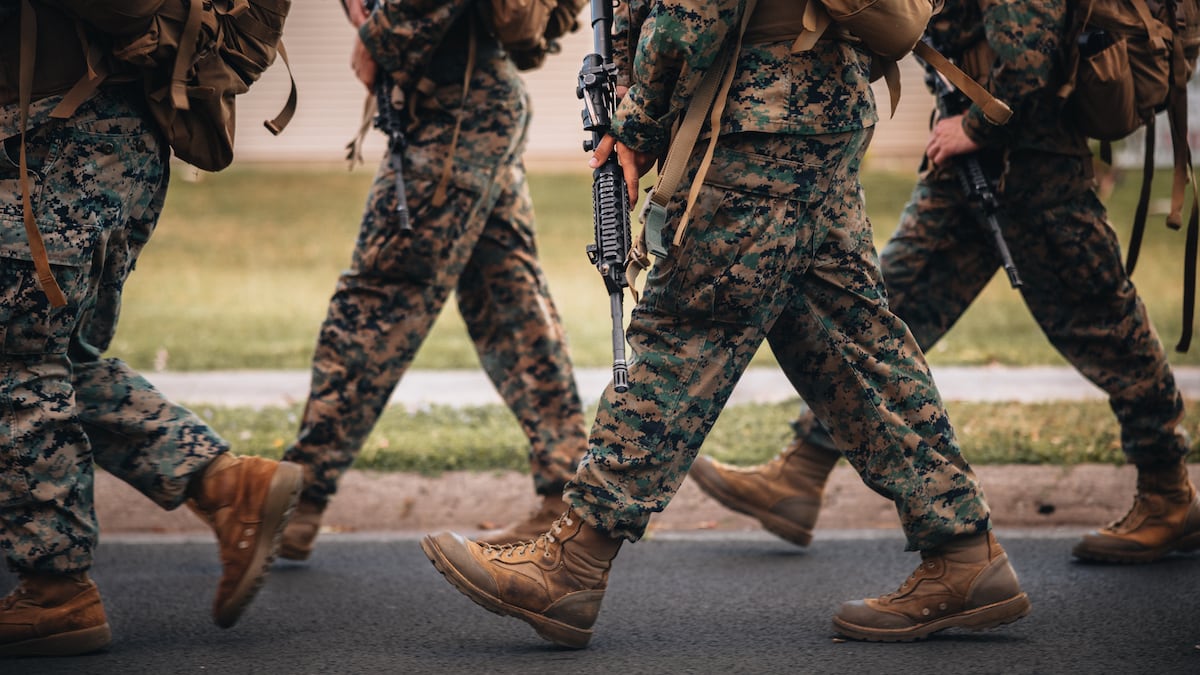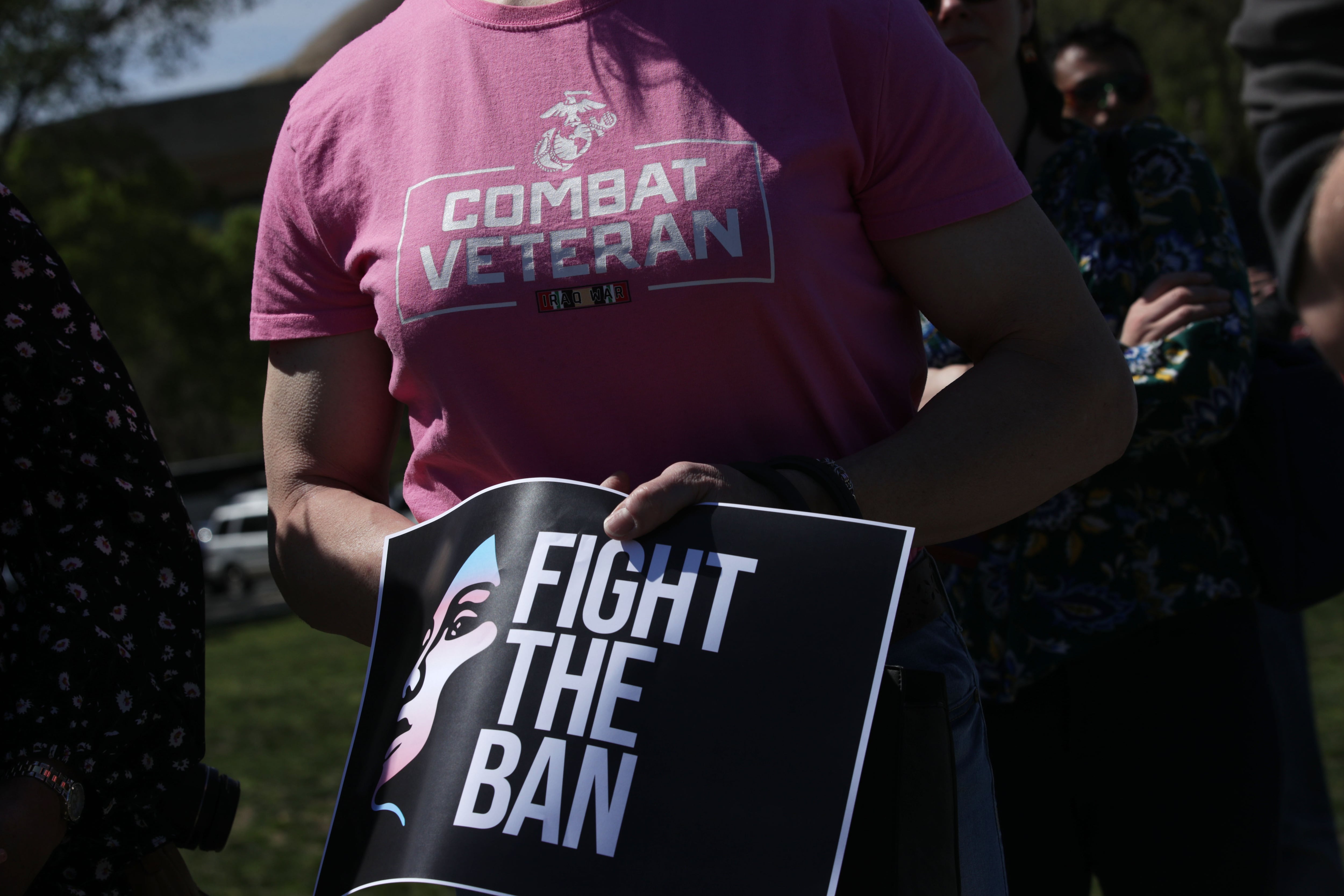For the first time in five years, Marines are being given the chance to provide feedback on a slate of uniform change proposals that will soon be taken up by the service’s uniform board.
A survey that’s now live asks jarheads to weigh in on prospective changes that would make ribbon racks easier to build and read; replace the all-weather coat with the tanker jacket in the enlisted sea bag; and authorize women to wear the iconic knee-length boat cloak.
Marine Corps Times got an exclusive early look at the eight-question survey, which was published live on Thursday.
The first Marine Corps-wide uniform survey since 2019, and the first to be conducted under the Commandant Gen. Eric Smith, it’s composed almost entirely of issues raised by Marines in the fleet, said Mary Boyt, program manager for the Marine Corps Uniform Board.
RELATED

“If you go to the uniform board website, it explains the uniform board process and it tells you to contact the uniform board if you’ve got a good idea,” Boyt said. “So, individual Marines submitted most of (the proposals).”
Smith, who as commandant ultimately determines the issues that will be put to a survey ― which will be set before the board directly and that will be changed under his authority ― made one recommendation before voting got underway: to eliminate the requirement for women to wear pantyhose with dress uniform skirts.
Now awaiting finalization by Marine Corps Training and Education Command, that change will make hosiery optional for Marines with all skirts. That recommendation began with a request from a female Marine, Boyt said.
Within the official survey, which is limited to active-duty and Reserve Marines, the first question has to do with positioning of devices on ribbon racks and how to signify receipt of multiple awards.
The current system is so complicated, Boyt said, Marines often will pay to have professional vendors arrange their awards correctly, or ask senior Marines. The current regulations require Marines to put their most senior, or prestigious, award device in the center of their rack, with the next most senior to the right and left.
“When you have, like, four awards, it gets a little confusing as to where the middle is,” Boyt said.
The proposal on the survey aims to simplify that by placing the most senior device to the wearer’s right with all the other devices placed to the left in order of precedence, except for air medals, which have special placement in both systems. This change, Boyt said, should empower more Marines to arrange their own ribbon racks with confidence.
“You no longer have to go back and forth,” she said.
There’s one other piece of the proposal: In cases where a Marine has more than five devices on the same award (five of the same award, for example, with a “V” device on one), multiple awards would be represented by an Arabic numeral, like “5.”
The current system, which represents each subsequent award of the same medal with a star, is imperfect as Marines often run out of room for all the stars they’ve earned, Boyt said.
“Everybody handles it a little bit differently, but I think Marines most likely are just leaving off devices that don’t fit,” she said.
Two of the questions on the survey have to do with the Marines’ versatile pewter polyester/wool blend tanker jacket.
One proposal would add the tanker jacket to the sea bag of uniform items new enlisted Marines receive after boot camp, and to the Marines’ minimum requirement list, or MRL, a rundown of gear troops are required to pay to maintain in working condition through a special clothing replacement allowance.
This proposal would elevate the jacket from its current status as an optional item. A companion proposal, with a separate vote, would remove the knee-length, double-breasted all-weather coat from the minimum requirement list. Under that change, Marines would continue to get the all-weather coast at boot camp, but no longer have to pay to maintain it.
“The [all-weather coat] is the least-worn item on the MRL once a Marine leaves boot camp,” the survey states. “However, it is also the most versatile uniform item on the list. It is the one item that can be worn with all uniforms.”
Another tanker jacket proposal would provide a $100 cash allowance for Marine recruiters to purchase a tanker jacket, recognizing that recruiters wear the blue dress Charlie/Delta uniforms ― uniforms that don’t have another authorized outer garment ― as daily work wear.
All these changes acknowledge Marines uniform wear preferences and offer a little extra flexibility to troops who have different requirements based on their job and location, Boyt said.
“A lot of recruiters, just like Marines out in the fleet, are buying [the tanker jacket] at their own expense,” she said. “So this is just catching them up.”
Several changes, all proposed by female Marines, would modernize or refine women’s uniform requirements.
One would authorize women to wear the optional and rarely seen boat cloak, an $850 mess dress item with a striking scarlet lining that’s now authorized for male officers and staff noncommissioned officers.
As the survey explains, this change would happen as the shorter female dress uniform cape reaches obsolescence due to incompatibility with the new Mandarin-collar female dress blue uniform.
“If the boatcloak is authorized for female Marines, it will remain an optional, special-order item, and the cape will become obsolete, but Marines who own it will be allowed to continue to wear it until it is no longer serviceable,” the survey states.
“Very few people actually buy the boat cloak, because it’s very expensive,” Boyt said, but added that the item enjoys a “niche popularity,” particularly in the Washington, D.C., region. “So this would just be giving the female Marines the opportunity to wear the same cloak that the males are wearing with their standing collar.”
Another proposal would allow female Marines to wear black leather pumps with the evening dress uniform in addition to the currently required black suede and fabric pumps. This proposal, the survey states, is tied to the demise of the budget shoe retailer Payless.
“Payless was where you went when you wanted fabric-dyed pumps,” Boyt said.
With remaining options more expensive and harder to find, she said, it made sense to allow the black leather pumps Marines already owned to pair with more uniforms.
“In the evening dress uniform with the long skirt, the shoe is rarely visible,” the survey said. “So there is no reason why the standard black pump … could not be worn.”
A final proposal specific to female Marines asks for a vote on changing the color of the female necktab, to standardize a single color for all uniforms.
Currently, women wear a black necktab with the blue dress Charlie uniform and an olive drab one with the Alpha/Bravo uniforms. Marines can vote to have the service develop a khaki necktab to be worn with all uniforms, thus making the current tabs obsolete; or to standardize the black necktab for all service and dress uniforms.
Boyt said proposals about a standard necktab came from multiple Marines, including a female field grade officer. Ultimately, a uniform board working group, she said, opted to give surveyed Marines multiple options to choose from.
The survey will be live for 30 days to collect Marines’ responses, Boyt said. After that, the uniform board will convene sometime in the second quarter of 2024 to deliberate over proposals and the collected feedback before turning in recommendations to the commandant for his final decision.
For Marines in the fleet with their own ideas about how to improve uniform policy, Boyt said, the board is always open to feedback, which can be sent to Mary.Boyt@usmcu.edu.
“I can’t be everywhere, and I can’t see everything,” Boyt said. “So having Marines give me good recommendations is really what makes the uniform and the grooming standards better.”
Hope Hodge Seck is an award-winning investigative and enterprise reporter covering the U.S. military and national defense. The former managing editor of Military.com, her work has also appeared in the Washington Post, Politico Magazine, USA Today and Popular Mechanics.





